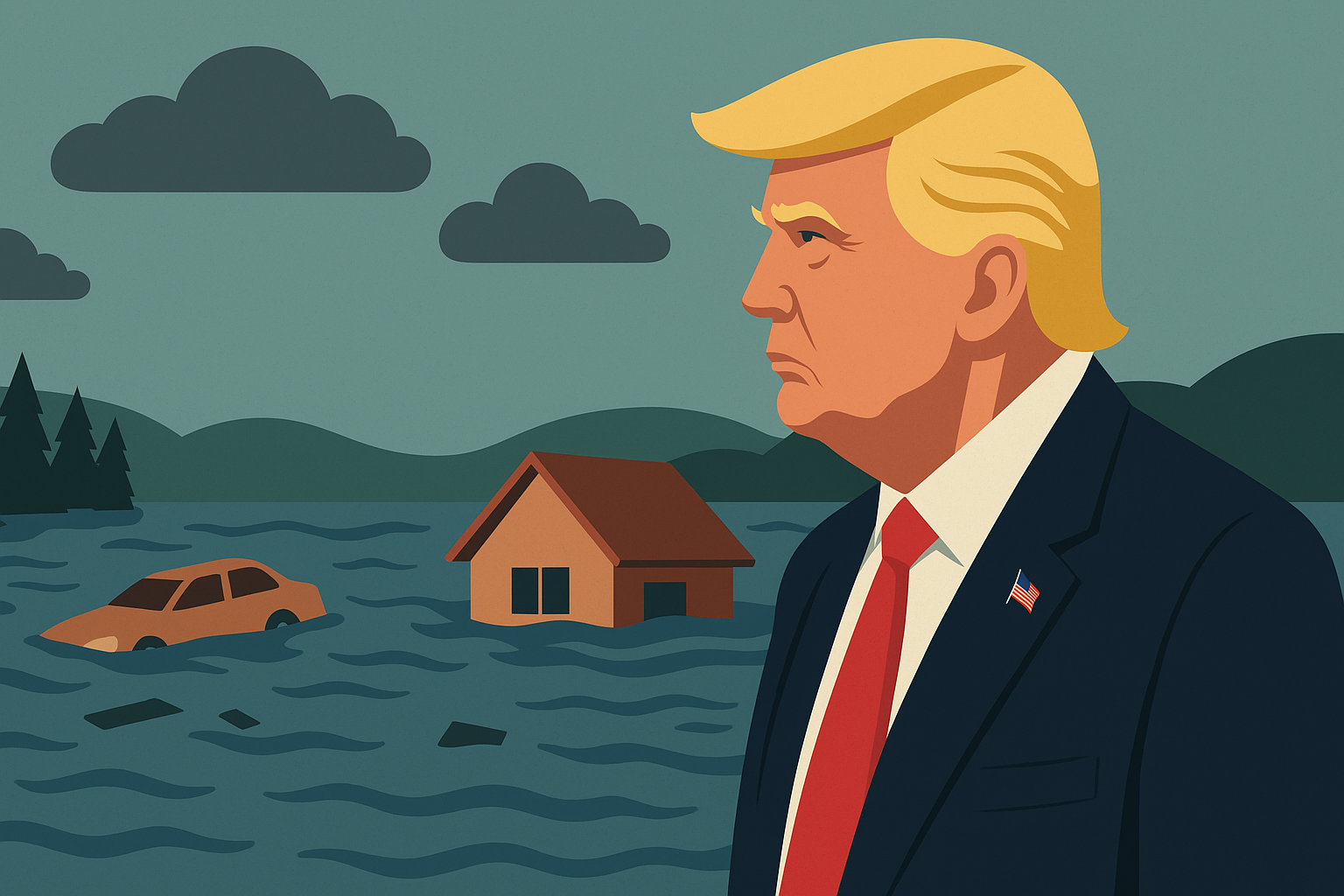President Donald Trump announced plans to visit flood-stricken Central Texas on Friday, as the region continues to recover from catastrophic flash floods that killed over 100 people during the July 4 weekend.
Speaking during a White House dinner with Israeli Prime Minister Benjamin Netanyahu on Monday evening, Trump acknowledged the scale of the disaster, which he described as a “big surprise” that struck “late in the evening.”
“Texas was just so badly hurt,” the president said. “We’ll be working with the governor and all of the people of Texas. We’ll be going on Friday.”
Trump previously stated that he had considered visiting Texas on January 6 of this year but chose not to, citing concerns about interfering with emergency operations.
Flood Devastation in Central Texas
The floods began in the early hours of July 4 after torrential rainfall overwhelmed the Guadalupe River, triggering deadly flash floods that swept through homes, summer camps, and resorts across the Texas Hill Country. As of July 8, the death toll stands at 104, with dozens more missing. Among the victims are at least 27 children and staff members from Camp Mystic, a historic Christian girls’ camp in Kerr County, one of the hardest-hit areas.
The floodwaters struck with little warning, catching many residents off guard. Search and rescue operations entered their fifth day on Tuesday, with teams continuing to scour submerged neighborhoods and rural campsites.
Political Backdrop and Criticism of Cuts to Weather Services
While details of the president’s itinerary in Texas have not yet been disclosed, it is expected he will coordinate efforts with Texas Governor Greg Abbott, a longtime ally. The affected communities are located in deeply Republican areas, including Kerrville, where Trump received nearly 75% of the vote in the 2024 election.
However, political scrutiny has grown in the aftermath of the disaster. Senate Majority Leader Chuck Schumer (D-N.Y.) has requested an investigation into whether recent budget cuts to the National Oceanic and Atmospheric Administration (NOAA) — which oversees the National Weather Service (NWS) — affected the agency’s ability to issue timely flood warnings.
In particular, Schumer questioned whether staffing vacancies at the NWS office in San Antonio contributed to delays or reduced accuracy in the flood forecasts.
White House Pushes Back
White House officials have rejected any suggestion that cuts to NOAA or the NWS compromised public safety. Press Secretary Karoline Leavitt defended the response, stating that forecasts and alerts were “timely and precise.”
“In the wake of this once-in-a-generation natural disaster, we have seen many falsehoods pushed by Democrats, such as Sen. Chuck Schumer and some members of the media,” Leavitt said during a July 7 briefing. “Blaming President Trump for these floods is a depraved lie, and it serves no purpose during this time of national mourning.”
A Community in Recovery
As rescue efforts continue, thousands of Texans are grappling with the loss of loved ones and the destruction of their homes and businesses. Federal and state officials are coordinating relief and recovery measures, with additional resources expected to be announced during the president’s upcoming visit.
More information about Trump’s itinerary and planned meetings with local leaders is expected to be released later this week.



